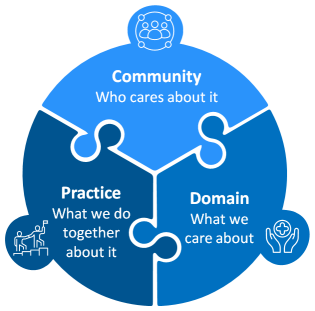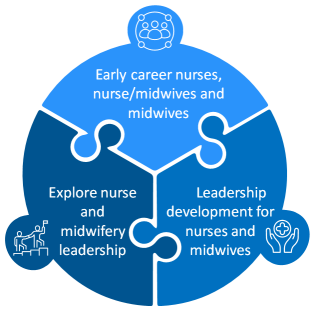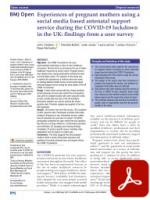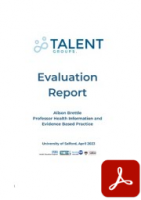Communities of Practice (CoP) are groups of people who share a concern or a passion for something they do and learn how to do it better as they interact regularly.
Communities of Practice (CoP) is a concept defined by Wenger in 1991 within the Social Learning Theory framework. According to this theory, learning is a transformative social process that empowers learners to take action. Wenger’s CoP structure is centred around three fundamental principles: the community, the domain, and the practice

Within the context of NHS England’s Global Health Unit there is expertise in creating well evaluated and highly effective CoP projects within the NHS providing antenatal education in Facemums and in low- and middle-income countries providing leadership development for early career nurses and midwives with TALENT Groups.
To illustrate how this CoP model has been used this diagram demonstrates the scope of CoP model: TALENT Groups

Community: The TALENT Groups Community consists of early-career nurses and midwives, as well as more experienced nurse and midwife leaders, all of whom are from the same country.
Practice: The community collaborates to study leadership in nursing and midwifery within their unique setting.
Domain: The TALENT Groups Community’s focus is on leadership development for early career nurses and midwives within their context.
The model we have created to use with health professionals and for health education is a flexible tool that offers a safe space for small groups to learn collaboratively and develop skills.
From the experience of creating CoP that have been successful in their aims and well evaluated has led to an expertise that means we are able to design bespoke CoP to engage health workers, facilitate learning and establish professional connections.
In designing this CoP model, we have created an Online Community of Practice Toolkit. The Toolkit synthesises the experience of Facemums and TALENT Groups, the collaboration of University of Salford and NHS England into a step by step guide to create a CoP.
Resources
Open access Facemums article : https://bmjopen.bmj.com/content/11/1/e040649
Facemums report : https://salford-repository.worktribe.com/OutputFile/1503154
TALENT Evaluation report : https://global.hee.nhs.uk/talent-evaluation-report/


